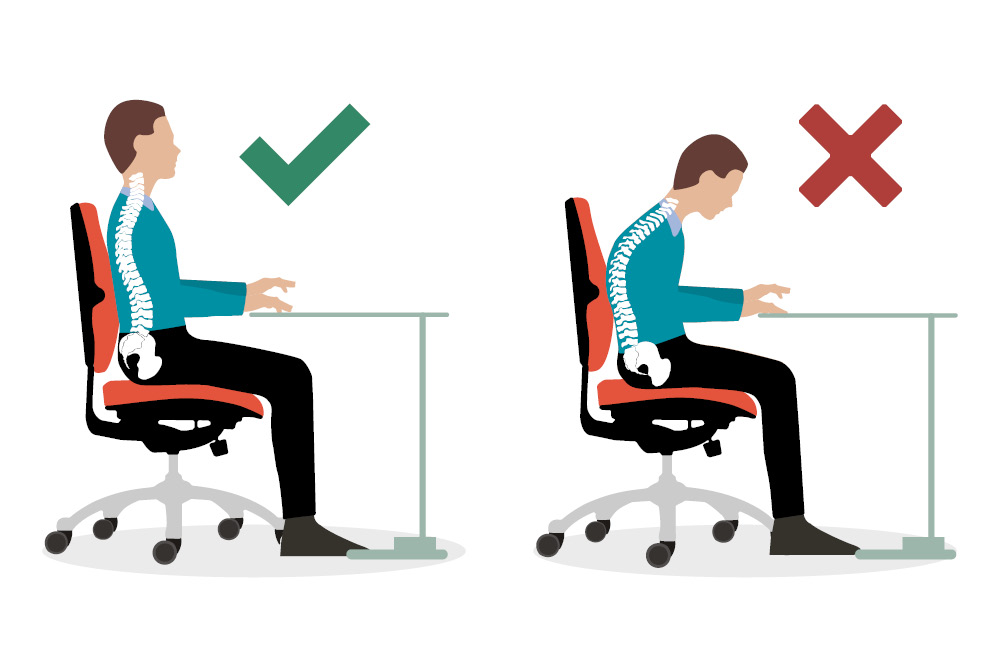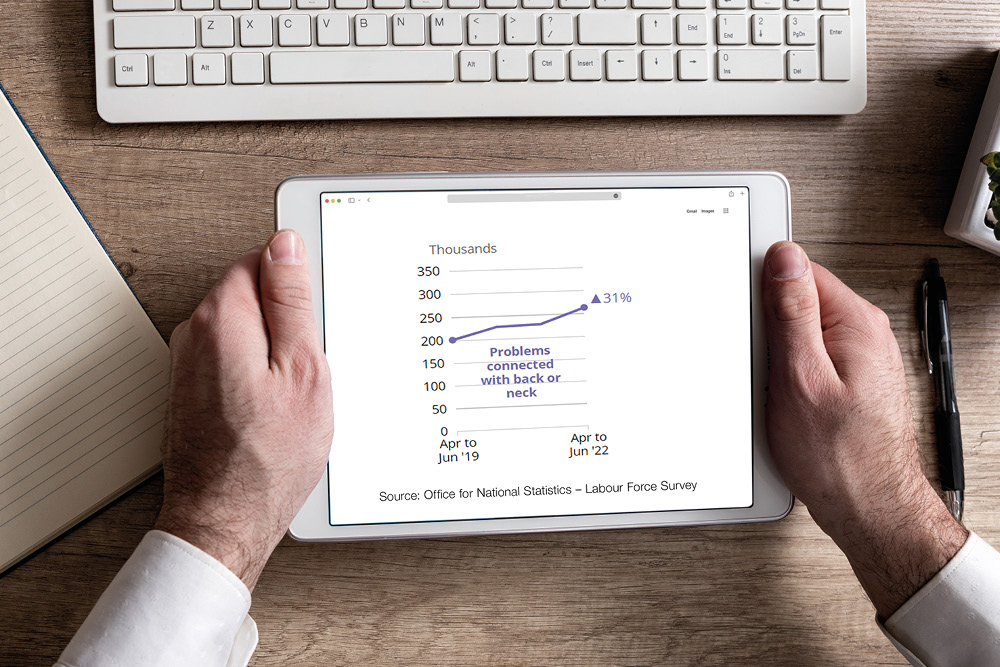A 31% increase in neck and back problems since 2019: this is the concerning new UK statistic from the ONS regarding people signed off on long-term sick leave.
'Poor ergonomics contributed to the number of 'economically inactive' people and to UK's labour shortage' reported The Guardian in November 2022, in their article 'Rise in back pain and long-term sickness linked to home working'.
Is the increase in musculoskeletal problems linked to homeworking?
'It is possible that increased home working since the pandemic has given rise to these kinds of chronic conditions' said The Office for National Statistics, in their analysis of this new Labour Force Survey.
Posturite also think it's likely that a high percentage of the rise in back and neck problems could be related to:
- Poor working positions at home
- Longer working periods without breaks
- And lack of or inappropriate work equipment or furniture at home
A homeworker's guide to back care and the What are the common causes of neck pain at work? infographic are two helpful resources on these themes.
Ergonomist Katharine Metters from Posturite is quoted in this 'WFH link to neck and back problems' national press article, stressing the importance of ergonomics for homeworking employees.

But surely unsuitable home workstations are mainly a relic of the 2020 panicked switch to homeworking?
Seemingly not.
"Sadly, I am aware that quite a few people still do not have the setups at home that are appropriate for the length of time and the tasks that they are required to do" Katharine says.
"Many of our clients at Posturite are working hard to support their staff working from home by providing equipment and reminding them about good workstation positioning and healthy working habits. They provide training to staff in good DSE practice and DSE assessments and specialist assessments to those that need them.
But unfortunately some employers don't seem to understand the importance of preventing pain and boosting productivity in their homeworkers."
Is it back to the office full-time for everyone then?
No, let's not over-react to this news. Let's support our homeworkers.
What are examples of poor positioning when working from home?
One regularly seen aspect of poor positioning is when the main screen of the person is positioned low, encouraging the head to tilt down and towards the screen. This then brings the person forwards from the back rest of the chair, reducing support for the body and engaging the neck muscles for long periods of time.
Also if the keyboard is in the wrong position, the shoulder girdle, arms and wrists have to adapt and sustain a position which creates tension to be able to utilise the keyboard.
Can ergonomic chairs prevent back and neck ache?
Ergonomic chairs can help to prevent backache in homeworkers if they fit the person and are used appropriately, supporting them in the right position relative to the other equipment they have. They are a significant solution for many people.
A good ergonomic office chair adjusted correctly helps prevent pain in your back, legs and hips.
"People must still move and change positions or tasks to remain healthy" Katharine Metters from Posturite reminds us. "So the ergonomic chair is not the only solution, but it is a significant solution to the problem."
Does a laptop stand for your laptop make much difference to your posture when doing computer work?
When you use a laptop stand and a separate keyboard and mouse, it makes quite a big difference to your posture. A laptop stand positions your laptop screen at a more suitable viewing height. This helps prevent you hunching and looking down at your screen, which could increase the risk of back pain, neck pain and other musculoskeletal issues.
Huge rise in neck and shoulder discomfort

I asked the Posturite team about the first six weeks of homeworking in 2020, and what they observed in their workstation assessments?
"At Posturite we delivered our workstation assessments remotely during lockdowns" explained Danny Murray, Lead Assessor. "My assessors reported back to me on what sort of conditions they were being asked to discuss. It was very apparent within the first six weeks that we had a huge rise in neck and shoulder discomfort. Much more than we normally saw. And then it was interesting that we then started to get the lower back problems increasing as well.
We attributed the initial great rise in neck problems to people working from portable devices that they'd been sent home with and were doing the best they could with what they had. These were usually laptops, but sometimes even mobile phones. They had to use what was available to them to do their jobs, often for long periods of time."
Two years have passed since that time and now that working from home is entrenched in our culture, health and safety for all working environments should be given the attention it deserves.
"We continue to deliver thousands of home workstation assessments to homeworkers now – and can usually give organisations the choice between remote and face-to-face delivery. It's a caring, expert service either way" explains Danny.
Read next:













